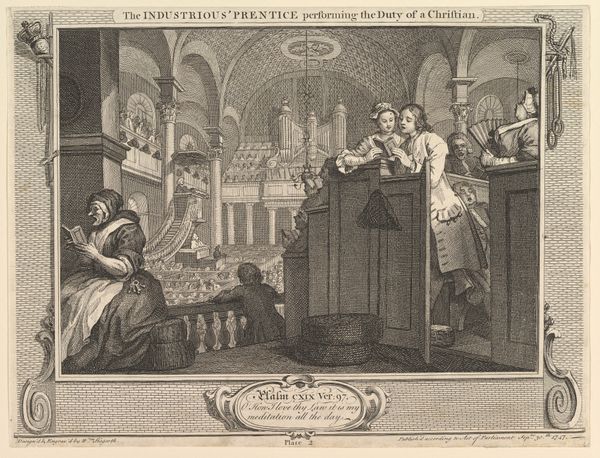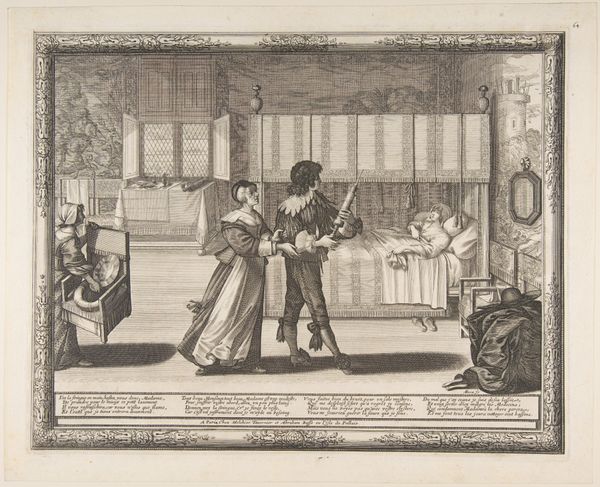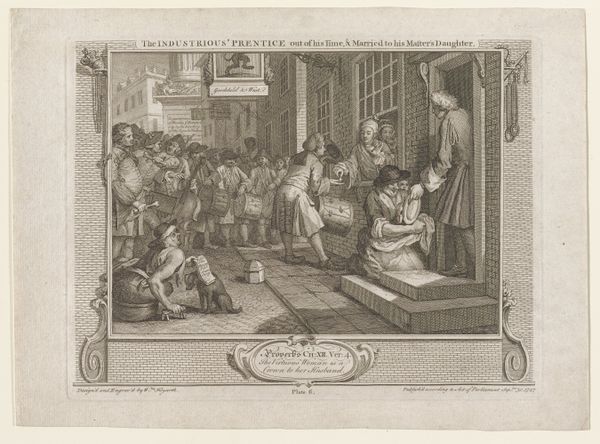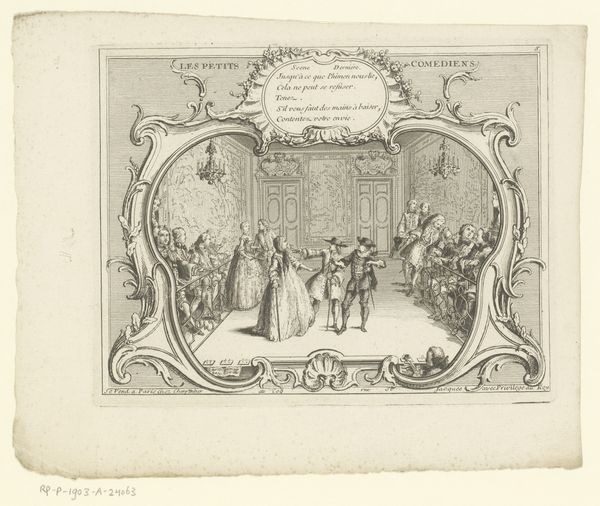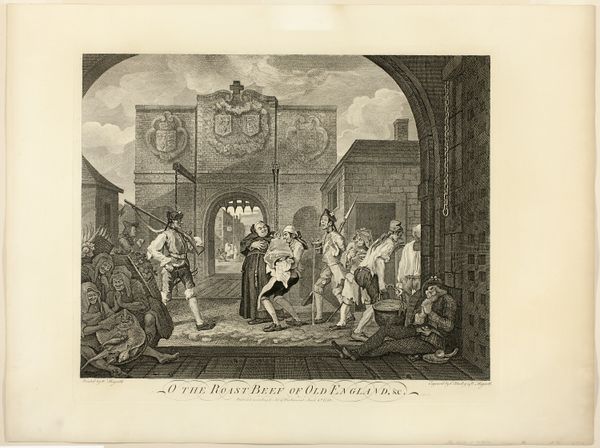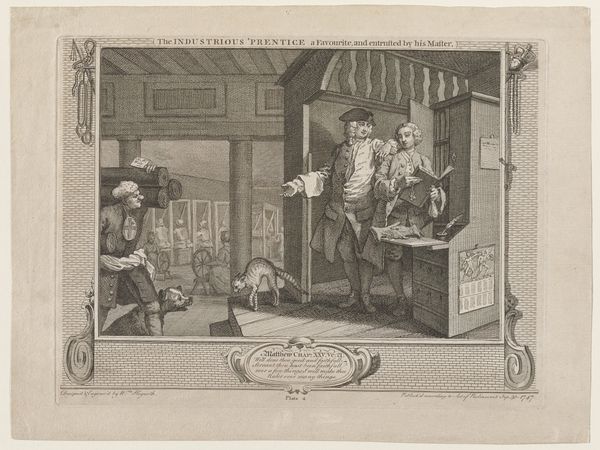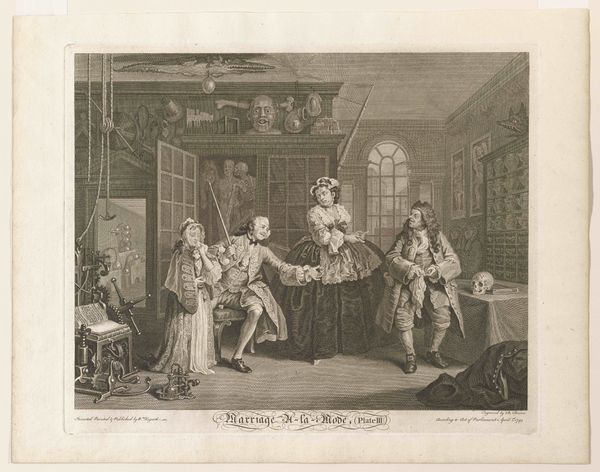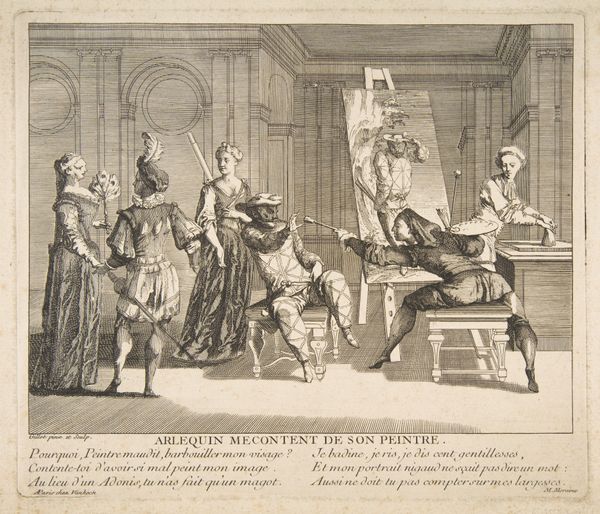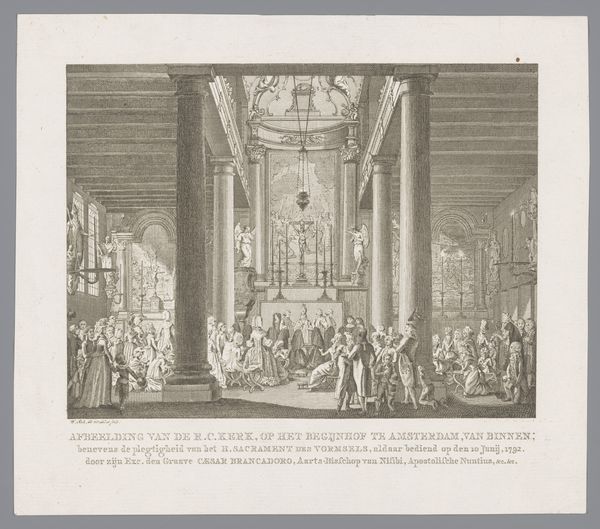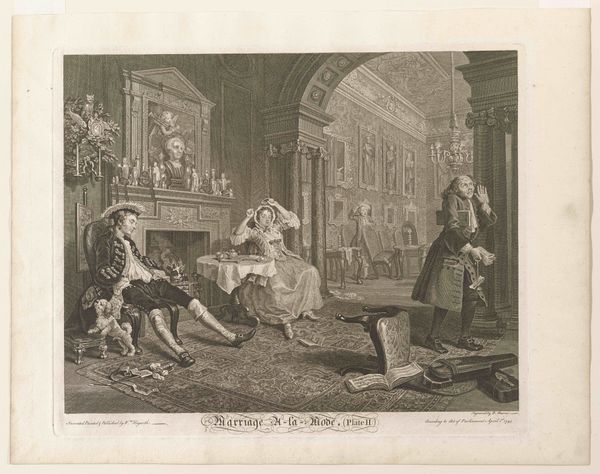
The Industrious Prentice Performing the Duty of a Christian 1747
0:00
0:00
drawing, print, etching
#
drawing
#
narrative-art
#
baroque
# print
#
etching
#
figuration
#
line
#
genre-painting
Dimensions: 10 3/8 x 13 11/16 in. (26.35 x 34.77 cm) (sheet)
Copyright: Public Domain
Curator: "The Industrious Prentice Performing the Duty of a Christian," dating from 1747 and residing here at the Minneapolis Institute of Art, comes to us via the hand and etching needle of William Hogarth. Editor: What immediately strikes me is how staged it all feels, yet intensely detailed. The figures are stiff, almost posed, yet the architecture of the church and the clothes are meticulously rendered in what seems to be precise lines. It evokes a sense of the industriousness of the manufacturing processes that it portrays. Curator: It’s a window into 18th-century London, reflecting Hogarth's fascination with social commentary. Notice the stark contrast in demeanor across different classes represented, and how the architectural elements symbolize the church as a pillar of society, a theater for class display, in some respects. Editor: Absolutely. And consider how Hogarth employs etching—a reproductive technique. He's not just making a single artwork, he is creating an image meant for wider distribution. Think of it: an early form of accessible art reflecting the growing market economy and expanding reading public in the 1700's. How does it affect the making, marketing, and valuation? Curator: The print form is significant. Prints enabled Hogarth to address a wider audience with his moral narratives, to create discussion and hopefully influence public opinion, whereas if the original was on display, he’d be preaching to a more constrained choir. Hogarth really capitalized on printmaking's possibilities, both aesthetically and politically. Editor: Look at the line work, the way it defines form through dense hatching and cross-hatching, almost mirroring the laborious effort and precision required in trades. The choice of etching itself underscores the value placed on skilled manual labor—a comment in and of itself. Curator: It's intriguing to ponder Hogarth’s intentions – was he genuinely celebrating industry and piety, or subtly critiquing social pretension within the church? Or perhaps, as you suggest, the economics and manufacturing systems embedded in these structures of social control? Editor: It layers the piece quite richly. Viewing it now prompts interesting questions about its production and reception then. Thinking about materials and labor brings a whole new dynamic to Hogarth’s Industrious Prentice, don't you think? Curator: Indeed. Understanding that Hogarth meant for this image to reach a mass audience significantly alters our understanding of its intention and social purpose. Editor: And for me, realizing it was printed – multiplied from labor – changes my understanding from singular creation, to labor's complex story!
Comments
No comments
Be the first to comment and join the conversation on the ultimate creative platform.
